Abstract
OBJECTIVE: To examine the attitudes toward clinical practice guidelines of a group of family physicians who had recently entered practice in Ontario, and to compare them with the attitudes of a group of internists from the United States. DESIGN: Mailed questionnaire survey of all members of a defined cohort. SETTING: Ontario family practices. PARTICIPANTS: Certificants of the College of Family Physicians of Canada who received certification in 1989, 1990, and 1991 and who were practising in Ontario. Of 564-cohort members, 395 (70%) responded. Men (184) and women (211) responded at the same rate. MAIN OUTCOME MEASURES: Levels of agreement with 10 descriptive statements about practice guidelines and analyses of variance of these responses for several physician characteristics. RESULTS: Of respondents in independent practice, 80% were in group practice. Women were more likely to have chosen group practice, in which they were more likely to use practice guidelines than men. Generally favourable attitudes toward guidelines were observed. Physician characteristics occasionally influenced agreement with the descriptors. The pattern of agreement was similar to that noted in the study of American internists, but, in general, Ontario physicians were more supportive. CONCLUSIONS: This group of relatively new-to-practice Ontario family physicians shows little resistance to guidelines and appears to read less threat of external control in them than does the US group.
Full text
PDF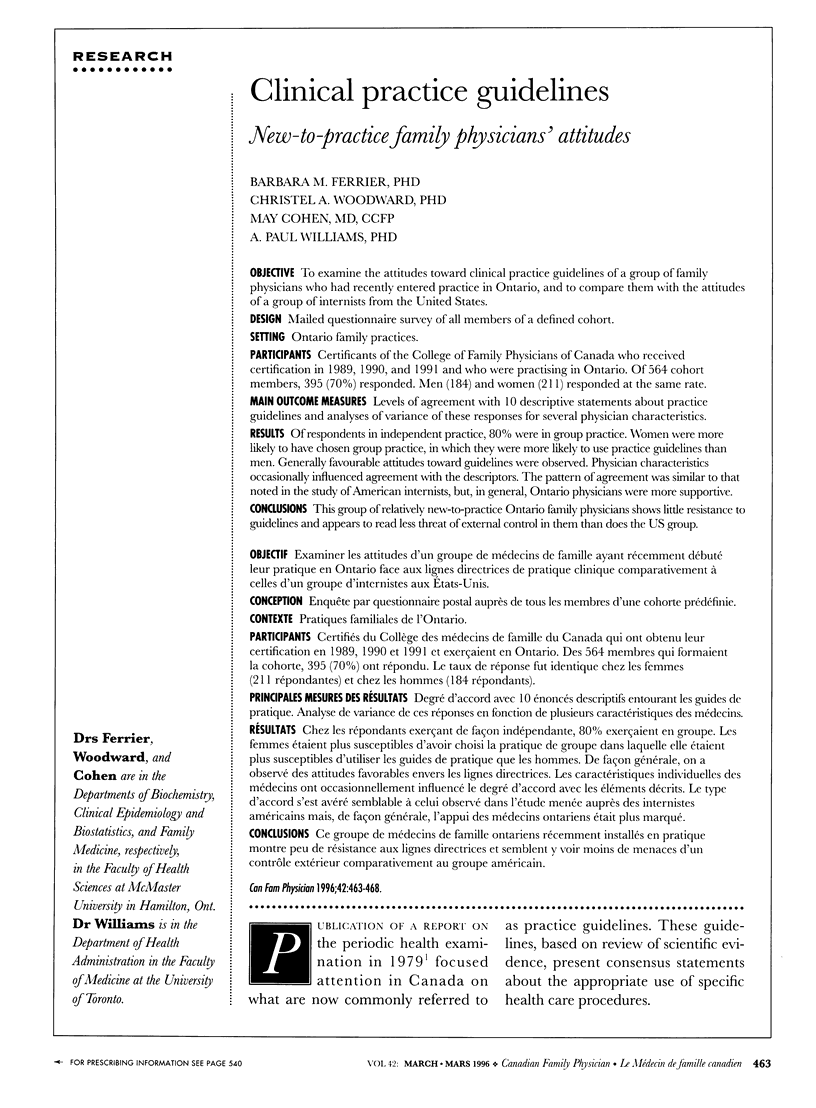
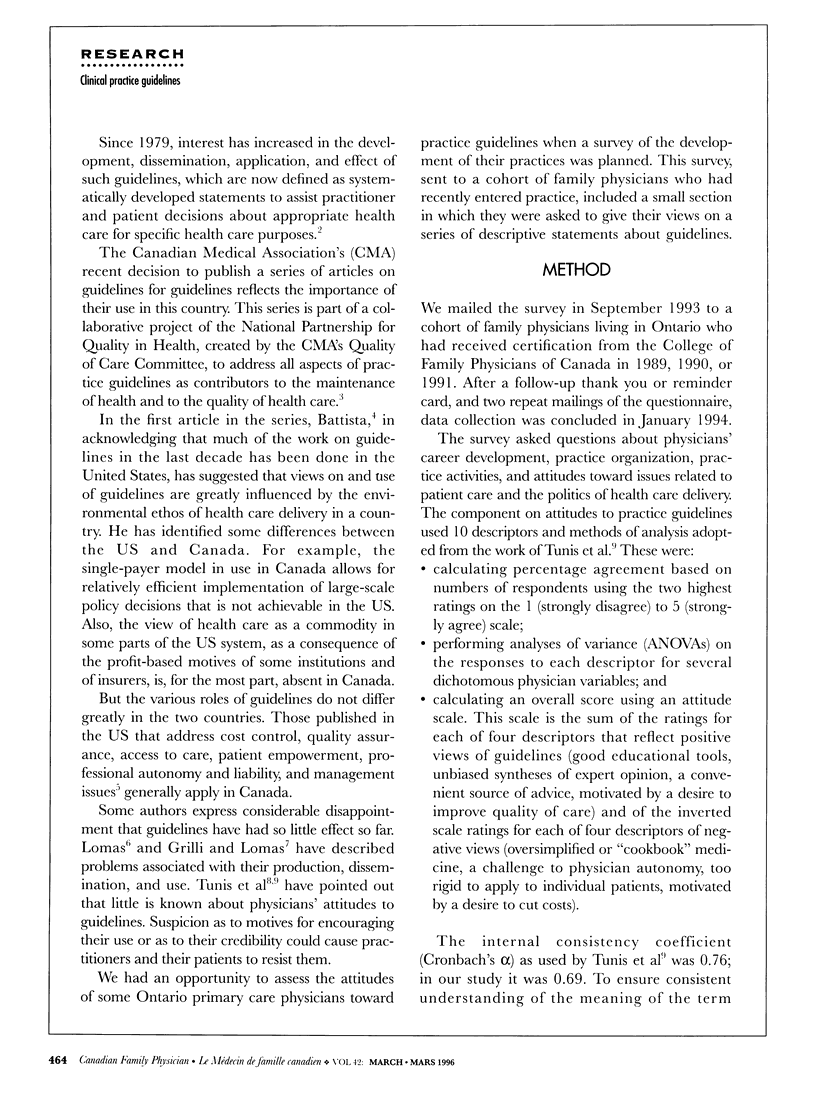
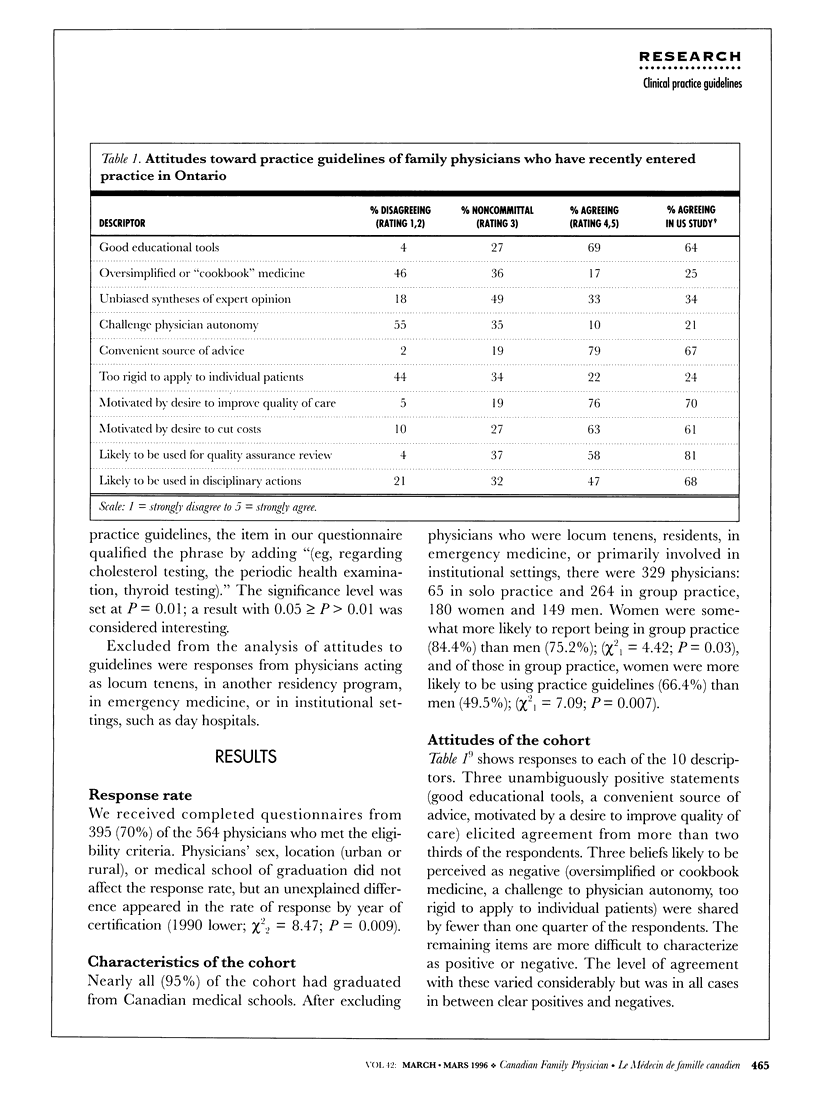

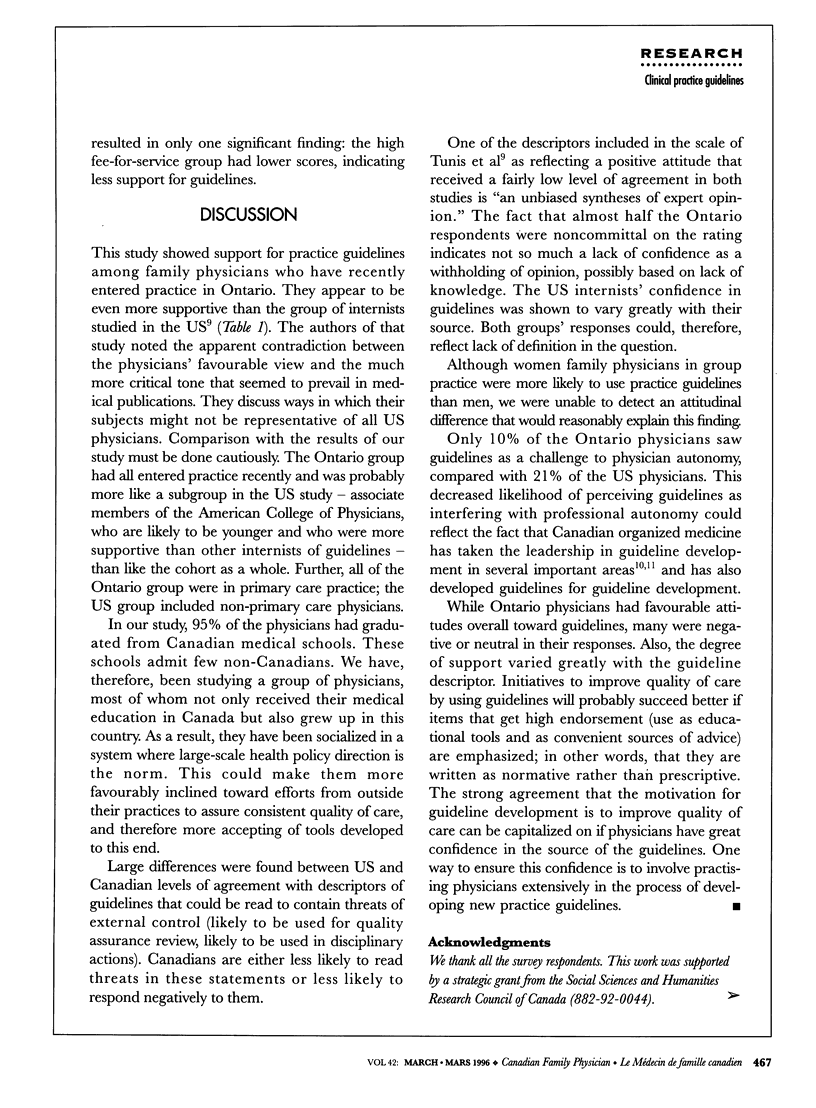
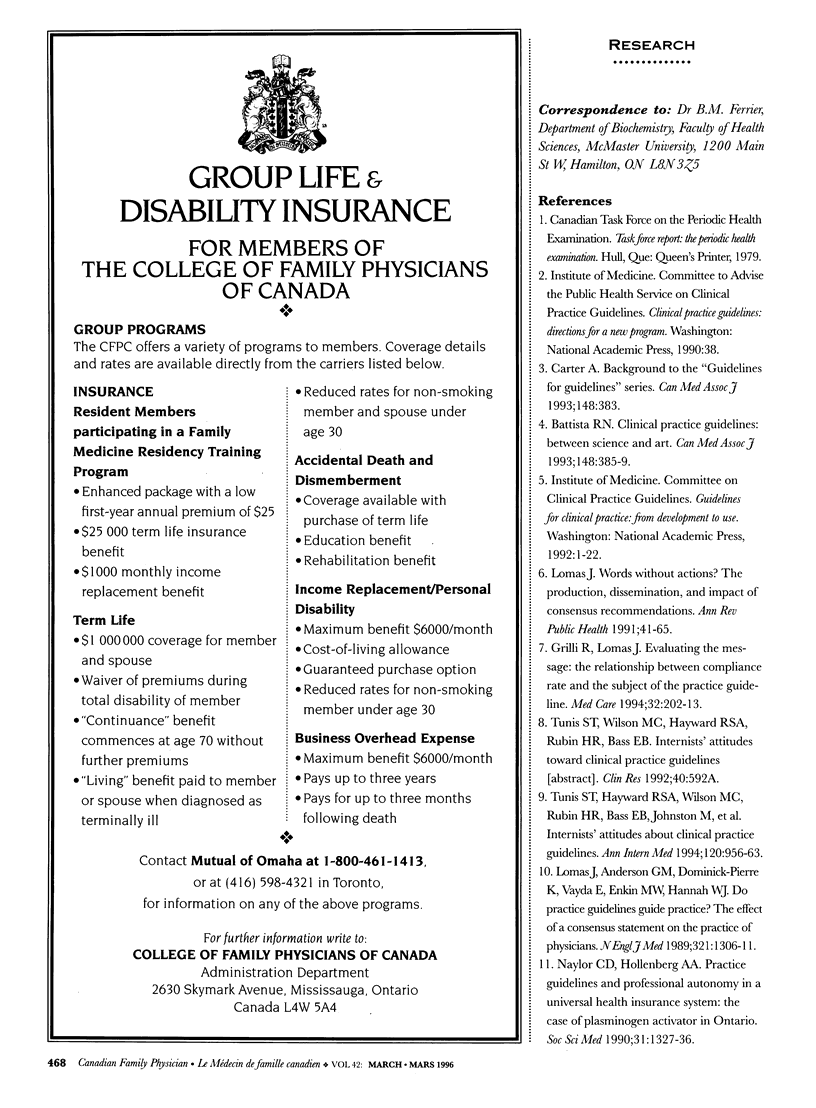
Selected References
These references are in PubMed. This may not be the complete list of references from this article.
- Battista R. N., Hodge M. J. Clinical practice guidelines: between science and art. CMAJ. 1993 Feb 1;148(3):385–389. [PMC free article] [PubMed] [Google Scholar]
- Grilli R., Lomas J. Evaluating the message: the relationship between compliance rate and the subject of a practice guideline. Med Care. 1994 Mar;32(3):202–213. doi: 10.1097/00005650-199403000-00002. [DOI] [PubMed] [Google Scholar]
- Lomas J., Anderson G. M., Domnick-Pierre K., Vayda E., Enkin M. W., Hannah W. J. Do practice guidelines guide practice? The effect of a consensus statement on the practice of physicians. N Engl J Med. 1989 Nov 9;321(19):1306–1311. doi: 10.1056/NEJM198911093211906. [DOI] [PubMed] [Google Scholar]
- Lomas J. Words without action? The production, dissemination, and impact of consensus recommendations. Annu Rev Public Health. 1991;12:41–65. doi: 10.1146/annurev.pu.12.050191.000353. [DOI] [PubMed] [Google Scholar]
- Naylor C. D., Hollenberg A. A. Practice guidelines and professional autonomy in a universal health insurance system: the case of tissue plasminogen activator in Ontario. Soc Sci Med. 1990;31(12):1327–1336. doi: 10.1016/0277-9536(90)90072-z. [DOI] [PubMed] [Google Scholar]
- Tunis S. R., Hayward R. S., Wilson M. C., Rubin H. R., Bass E. B., Johnston M., Steinberg E. P. Internists' attitudes about clinical practice guidelines. Ann Intern Med. 1994 Jun 1;120(11):956–963. doi: 10.7326/0003-4819-120-11-199406010-00008. [DOI] [PubMed] [Google Scholar]


